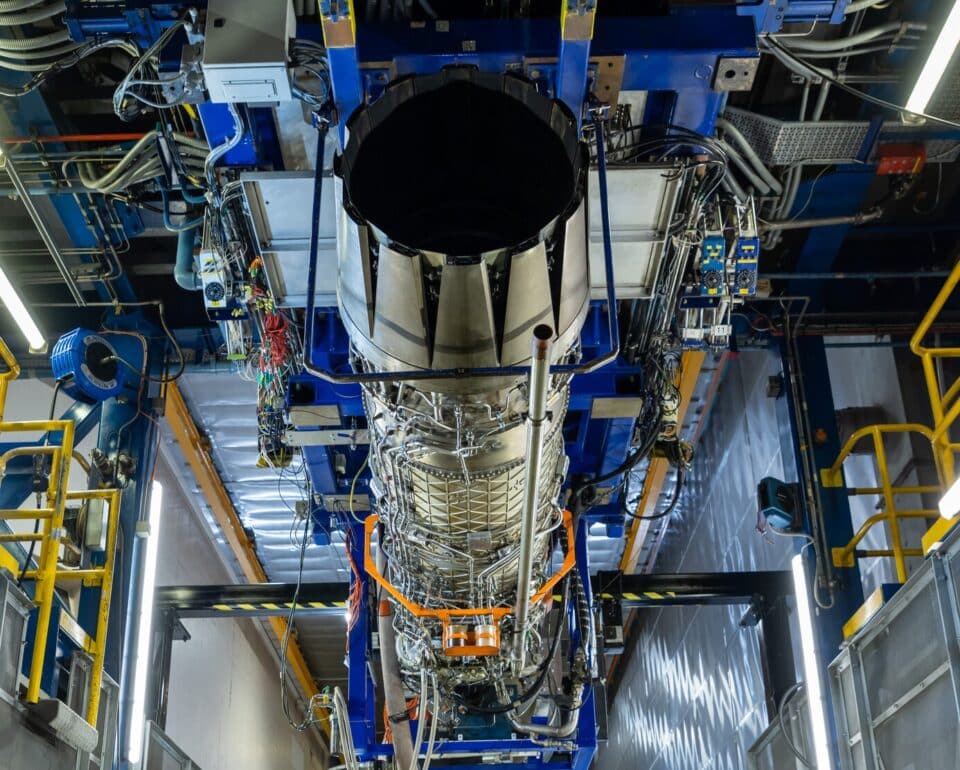Aerospace
UK industry reveals advanced technologies for next-generation flying combat air demonstrator

Engineers from the UK’s top combat air industry partners have revealed more details about the work being done to create the UK’s first flying combat air demonstration of its generation.
To develop the technology required to deliver the UK’s next-generation supersonic stealth combat aircraft, Tempest, experts from BAE Systems, Rolls-Royce, Leonardo UK, MBDA, and the Ministry of Defence (MOD) are working with a variety of British small and medium-sized enterprises (SMEs).
The UK government first announced the Flying Technology Demonstrator in July 2022. It is expected to take flight within the next four years and is being created employing a variety of cutting-edge digital techniques and transformative processes, as well as the know-how of the UK’s top-tier defence sector.
Test pilots from BAE Systems, Rolls-Royce, and the Royal Air Force (RAF) have flown the demonstration aircraft for more than 150 hours in a new, custom simulator at BAE Systems’ brand-new facility in Warton, Lancashire, giving vital data to assist flight testing.
UK industry to play key role in new Global Combat Air Programme(Opens in a new browser tab)
Engineers have also been testing aerodynamic engines, using cutting-edge manufacturing techniques to create an engine duct that is specially designed to reduce air speed at the engine face from supersonic to subsonic. Because there are fewer moving parts in the intake than in a conventional fighter jet design, the aircraft is more stealthy. The Concorde Olympus engine’s test was done in the 1960s at the same facility now used by Rolls-Royce, in Filton, Bristol.
A group of engineers from BAE Systems have overseen ejection seat demonstrations using a rocket-propelled sledge moving at more than 500 mph while collaborating with UK crew escape expert Martin Baker. Junior team members and seasoned engineers collaborated to transfer important skills that can be applied moving ahead.
The Global Combat Air Programme, which will be supplied by the UK, Italy, and Japan, will produce Tempest, an aircraft, and this variety of unique technologies will demonstrate and test important parts of the next-generation combat air design as well as skills, tools, processes, and procedures.

Aerospace
When Ratan Tata was denied entry to the airfield at the Aero India show, he waited

During our visit to Aero India 2019, we had the unexpected opportunity to see Ratan Tata at the event, which was a thrilling moment for us. However, there was a surprising hiccup when the security staff didn’t allow him to enter due to a lack of a security pass.
Despite this, he remained calm and patiently waited for about 20 minutes until a member of the Tata team brought him the required pass, after which he calmly proceeded inside. It was a humbling sight, showcasing his composed demeanor even in such situations.
Ratan Tata ji is not only a renowned industrialist but also a trained pilot, holding a pilot’s license. In 2007, he became the first Indian civilian to fly the F-16 Falcon during the Aero India show in Bangalore—a proud moment for the nation.
His passion for aviation extended beyond flying, as he played a key role in shaping India’s aerospace industry. Under his leadership, Tata ventured into manufacturing and maintaining aerospace components while upholding its legacy of quality. Notably, Tata’s collaboration with Airbus to develop and manufacture the C295 aircraft is a testament to its growing influence in the sector.
-

 Aviation2 months ago
Aviation2 months agoMicrosoft Flight Simulator Raises $3 Million to Bring Back the An-225 Mriya
-

 Airlines2 months ago
Airlines2 months agoQatar Citizens Can Travel to the United States Without a Visa
-

 Aviation2 months ago
Aviation2 months agoQatar Airways bans these new Electronic Devices on plane
-

 Airlines2 months ago
Airlines2 months agoJapan Airlines Rolls Out Free Domestic Flights to International Passengers
-

 Defence2 months ago
Defence2 months agoWhich Country Has the Largest Fleet of Fighter Aircraft?
-

 Airport2 months ago
Airport2 months agoWestern Sydney Airport Welcomes Its First Plane After 6 Years of construction
-

 Travel2 months ago
Travel2 months agoQatar Airways Launches Four Additional Flights from Amsterdam
-

 Airlines4 days ago
Airlines4 days agoDAMAC Air: Dubai’s New Luxury Airline Offers Free Flights for Registration








